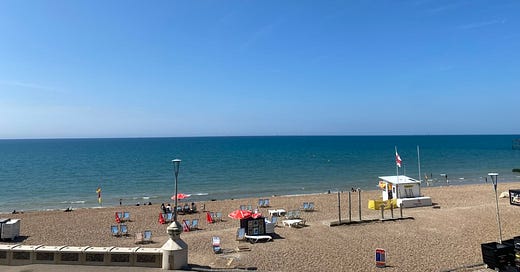OnlyFans: Work, Health and AI in the Shadows
Work and health is relevant across settings. Even, or arguably especially, in work operating in the shadows. I shared a case study covering work, health, OnlyFans and AI at a UK occupational health conference earlier this week. Here are the highlights.
OnlyFans is an online content subscription service. While it hosts a range of creators, it is best known for its use in adult entertainment and pornographic content. It’s an interesting case study: a UK-based company with a significant global cultural and economic impact.
There are several compelling work and health angles to explore with OnlyFans. Some of these reflect broader themes in the adult entertainment industry, while others highlight emerging issues unique to platform-based content creation.
1. Work and health in the adult entertainment industry
Adult entertainment brings with it a mix of long-recognised and still-emerging occupational health (OH) risks, including
Physical health risks (e.g. STIs)
Psychological risks (e.g. depression, PTSD)
Wider safeguarding risks such as coercion and exploitation (especially in unregulated settings)
Some parts of the industry have structured OH practices. For example, the PASS system (Performer Availability Screening Services) in the US and Canada is a voluntary standard widely adopted by professional studios. It includes:
Regular STI testing
A centralised performer health database
Treatment and return-to-work protocols
Contact tracing and production halts when needed
It’s an industry-led model of occupational health something rarely seen in other gig-based and poorly regulated industries.
2. Work and health on OnlyFans
While there's no publicly available data on the business structures of OnlyFans creators, it’s likely that most operate as sole traders, due to the simplicity of registration and accounting.
OnlyFans grew rapidly during the COVID-19 pandemic, as people sought flexible income streams. I’ve written previously about the pros and cons of flexible work. The creator economy is one manifestation of that—and I don’t think it’s all bad.
Still, it’s worth noting that most OnlyFans creators won’t have access to occupational health support, especially if they are working independently. They operate without the protections or oversight that formal employers or even agency models might offer. This is in the context of the adult entertainment industry which has an occupational health risk profile that is far from negligible.
3. OnlyFans outsourcing…a hidden layer of labour
One of OnlyFans' most profitable features is its personalised messaging function. This is where fans pay for private conversations with creators. For some, this revenue stream makes up more than 50% of their income.
Creator management agencies have evolved to meet demand. Among other things, these agencies can outsource creator messaging inboxes to overseas workers (often referred to as "chatters"). While this may help scale the creator’s operations, there are reports of poor working conditions, long hours, and burnout among chatters adding another hidden layer of labour to the adult entertainment ecosystem. The ethics of outsourcing chat away from the creator themselves is another controversy.
4. Enter AI Chat
Recently, the media has reported on OnlyFans creators using generative AI to automate conversations with subscribers. While this has raised questions about authenticity and deception- creating another angle to the debate on outsourced chatters, there may be another side to it.
AI may be useful in reducing occupational health risks for creators and further for the chatters behind them by taking on emotionally taxing or high-volume messaging tasks. Automation could reduce risk for the workforce in a poorly regulated industry. Where would this feature on the hierarchy of controls?
This use case also demonstrates how AI can help mitigate “key man risk”, a common constraint in services where the individual is the core offering. For creators whose personality is central to their product, scaling is often limited by their time and energy. If AI can replicate aspects of that presence, it offers a new kind of scale, without the burnout, and without the headcount.
Lara’s take
The adult entertainment industry is a controversial starting point. The working conditions for those in it can be poor and even exploitative. In the case of OnlyFans, this is multiplied by the factors around non employment routes to income that underpin the creator economy. Outsourcing chat to human workforces in unregulated contexts is another layer to this work and health risk.
Outsourcing to AI adds a whole new angle. AI in adult content creation is controversial. But if its use helps reduce exploitation and emotional harm, is it necessarily a bad thing? I shared OnlyFans as a case study with an audience of occupational health professionals earlier this week. Around 30% thought AI has solved for risk in a poorly regulated space with 70% of respondents aligning with AI contributing to poor working conditions through helping the platform scale. In an ideal world, work and health support exists throughout the economy, including in difficult to reach and poorly regulated sectors. Could AI be part of the solution here? And if it isn’t, what is?






